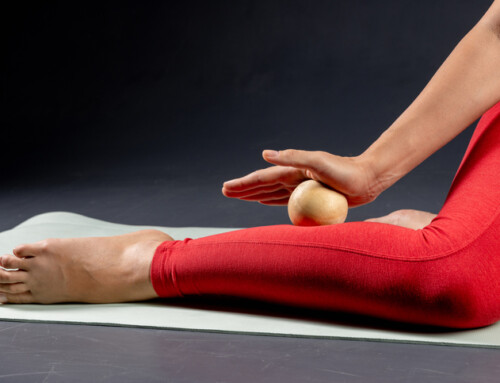By Evelyn Gile, SPT
About the Tibialis Posterior Muscle
The tibialis posterior muscle is located in the deep compartment of the calf. It starts on the back side of the bones in the lower leg (the tibia and fibula) then runs behind the medial malleolus and attaches to the bones on the inside and bottom of the foot. The main function of the tibialis posterior is to point the foot (plantar flexion) and tilt the foot towards midline (inversion). Due to the location of the tibialis posterior tendon on the bottom of the foot, it also helps with stabilizing the medial longitudinal arch, or the arch on the inside of the foot.
The tibialis posterior muscle plays an important role in shock absorption and push off in running and walking. As one takes a step, the tibialis posterior controls how much the foot forms to the surface and how much shock the foot absorbs by slowly lowering the medial longitudinal arch. When there are issues with controlling the arch of the foot, the inner part of the foot absorbs an abnormal amount of stress, which can lead to inflammation and pain with repetition. The tibialis posterior also pulls the arch upwards, assisting in creating a more stable foot. This action prepares the foot for push off so one can propel themselves forward. If the action is hindered, then the push off phase of gait is altered and one cannot propel themselves forward as efficiently.
What is Tibialis Posterior Tendonitis?
Tendonitis is a condition in which the tendon of a muscle, which connects the muscle to bone, becomes inflamed and painful as a result of overuse. Tibialis posterior tendonitis can occur in runners when their arch flattens too much with each step (overpronation), making the tibialis posterior work harder and more likely to be injured. Overpronation can occur if there are muscular strength or flexibility imbalances in the hip, knees, and ankles, or improper footwear. Individuals with tibialis posterior tendonitis may experience swelling and an achy or strong pain on the inside of the ankle with activity, such as walking, running, or jumping.
How Physical Therapy Can Help Tibialis Posterior Tendonitis
A skilled physical therapist can assess your foot motion, walking or running mechanics, strength, and posture. They then can create a plan that is specific to you to address the cause of your tibialis posterior tendonitis. They can also create a plan to strengthen the muscle so it can absorb forces and create proper force production so you can continue running without pain.
Physical Therapy for Tibialis Posterior Tendonitis in Queensbury & Saratoga
Physical therapy is not just about managing symptoms, it’s about addressing the cause of your tibialis posterior tendonitis and making adjustments to your mechanics, strength and posture. By working closely with a skilled physical therapist and adhering to a personalized treatment plan, individuals can strengthen the muscles and continue running without pain. If you or someone you know is struggling with tibialis posterior tendonitis, consider the transformative potential of Physical Therapy.
To schedule a physical therapy appointment for tibialis posterior tendonitis in Malta, Saratoga Springs, Delmar or Queensbury NY, please call (518) 289-5242.
References:
- Neumann DA. Kinesiology of the Musculoskeletal System. 3rd ed. Elsevier, Inc; 2017.
- Howitt S, Jung S, Hammonds N. Conservative treatment of a tibialis posterior strain in a novice triathlete: a case report. J Can Chropr Assoc. 2009;53(1):23-31.
- Posterior tibialis tendon dysfunction: Diagnosis & treatment. Physiotutors. May 20, 2024. Accessed July 6, 2024. https://www.physiotutors.com/conditions/posterior-tibialis-tendon-dysfunction/.
- Louw M. Posterior tibial tendonitis – top treatments and what to avoid! Sports Injury Physio. November 19, 2023. Accessed July 6, 2024. https://www.sports-injury-physio.com/post/posterior-tibial-tendonitis-top-treatments-and-what-to-avoid.






